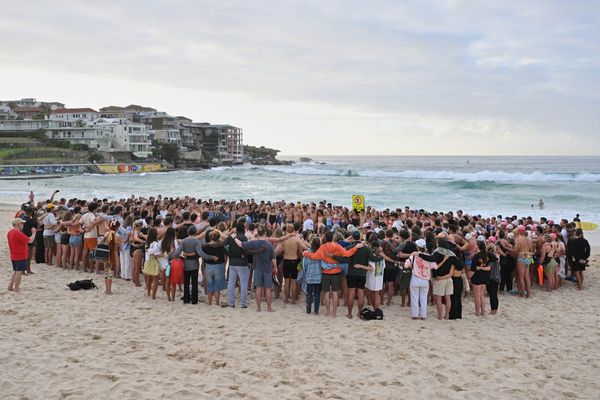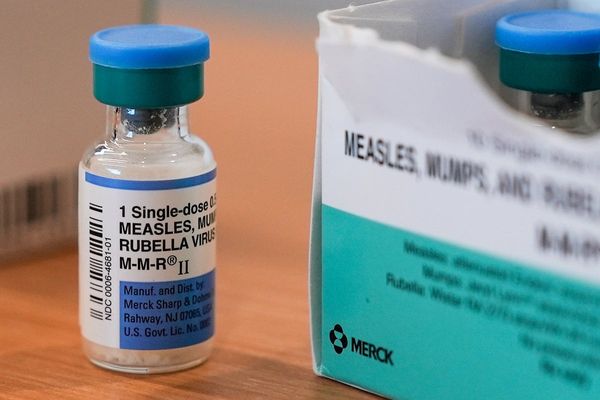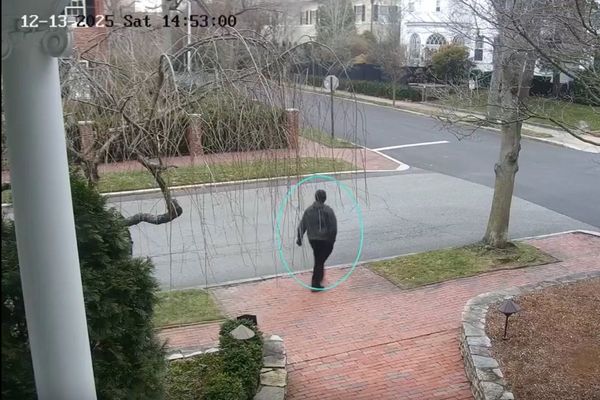
A top US military official has ordered the national guards of all 50 US states, the District of Columbia and US territories to form “quick reaction forces” trained in “riot control”, including use of batons, body shields, Tasers and pepper spray, according to an internal Pentagon directive reviewed by the Guardian.
The memo, signed on 8 October by Maj Gen Ronald Burkett, the director of operations for the Pentagon’s national guard bureau, sets thresholds for the size of the quick reaction force to be trained in each state, with most states required to train 500 national guard members, for a total of 23,500 troops nationwide.
As authority, Burkett cited Donald Trump’s August executive order that deployed the guard to fight crime in Washington DC. The same order required the secretary of defense to create “a standing National Guard quick reaction force … available for rapid nationwide deployment” in “quelling civil disturbances”.
Janessa Goldbeck, a former US Marine Corps captain and chief executive of the Vet Voice Foundation, a non-profit advocacy group, said the order represented “an attempt by the president to normalize a national, militarized police force”.
She predicted that force would be used to send troops to states led by Democratic governors without their permission and could be used to suppress turnout and disrupt the fair operation of elections.
In a worst-case scenario, she said, “the president could declare a state of emergency and say that elections are rigged and use allegations of voter fraud to seize the ballots of secure voting centers”.
The Pentagon did not respond to repeated requests for comment. A spokesperson for the national guard bureau declined to comment on concerns that Trump is seeking to normalize a national militarized police force or could potentially use the force to seize ballot boxes.
Abigail Jackson, a White House spokesperson, said: “The president has lawfully deployed the national guard to several cities either in response to violent riots that local leaders have refused to quell, or by invitation to assist local law enforcement as appropriate. President Trump and the entire administration is working to make America safe again.”
She added: “The tremendous results from cities like Memphis and DC, where crime has significantly dropped following national guard deployments, debunk all of the fearmongering and lies from the Guardian.”
The 8 October memo says the Pentagon will deploy military trainers to every state and US territories as far away as Guam with the goal of making the quick reaction forces “operational” by 1 January 2026. Each state will also be provided “100 sets of crowd control equipment to be used to support this requirement”.
Among other things, the troops are to be trained how to “form Squad-sized Riot Control Formation”, how to “employ a Riot Baton as a Member of a Riot Control Formation”, and how to “Supervise a Riot/Crowd Control Operation”. National guard members are also to be trained in de-escalation of force techniques.
Each state is to report monthly on its progress.
Another Pentagon document reviewed by the Guardian, dated 24 September, mandates the creation of a “specialized military police battalion within the District of Columbia National Guard” that is “dedicated to ensuring safety and public order in the Nation’s capital as the circumstances may necessitate”.
The order requires that a 50-person “full-time element of this unit” be trained and ready for utilization within 90 days and reach full strength by 2027.
While creation of national quick reaction forces was not unprecedented, they typically occurred after a serious emergency, according to Christopher Purdy, a national guard veteran of the war in Iraq.
In 2005, Purdy noted, more than 50,000 national guard troops were deployed after Hurricane Katrina destroyed much of New Orleans. Purdy is chief executive of the Chamberlain Network, which this week filed an amicus brief at the supreme court opposing Trump’s deployment of national guard troops to Illinois.
Military experts said the Trump administration’s moves hearken back to an earlier era when national guard troops were frequently deployed to quell protests and disturbances, such as the 1970 Kent State shooting in which four unarmed college students were killed by the Ohio national guard.







